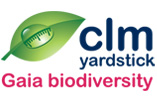Latest news
Update of the biodiversity score Gaia 2
Newsflash: July 1, 2019
The biodiversity score Gaia 2 of the reference group has been updated and improved. The number of dairy farmers that have used the yardstick has increased. This made it possible to recalculate the score based on a larger reference group, which contains over 500 individual dairy farmers. The old score is based on 83 different types of farms, from which 12 farms are organic. This caused the biodiversity score of the reference group to be relatively high. The new reference group contains a lower portion of organic dairy farmers, this portion of 3% is similar to the percentage of organic dairy farmers in the Netherlands (CBS, 2018).
The new total biodiversity score of the reference group is 21, compared to a score of 26 in the old reference group. All new scores of the reference group are updated in the results page of the GAIA2 yardstick.
Now available, pie chart of biodiversity areas
Newsflash: April 23, 2012
Since April, areas of high biodiversity value are outlined both as figures and in pie charts.
The first pie chart shows the share of total company area, including natural reserves (in hectares), including:
- Productive areas under targeted nature management (extensive cropping, postponed mowing, etcetera)
- Area of non-productive elements in the field (wet, herbaceous and wooden elements in the field, green on farmyard)
- Area of natural reserves
The second pie chart represents the share (as %) of the cadastral agricultural land, excluding natural reserves, consisting of
- Productive areas under targeted nature management
- Area of non-productive elements in the field, divided in:
A. Wet elements as ditches, ponds and their banks
B.Herbaceous elements as non-productive field corners, berms and borders of arable fields
C. Wooden elements like trees, hedgerows, coppices and lines of trees
Gaia biodiversity yardstick is very popular
Newsflash: May 9, 2012
Around 180 people already used the biodiversity yardstick since it was launched on February 16, 2012. The online yardstick to measure simple, quick and sound the biodiversity efforts on a farm, seems to be a big hit!
Several regional farmer organisations are interested in the yardstick and encourage their members to fill in the yardstick. In the meanwhile, the first group reports are made and the posters of individual farm scores are presented. You may find an example of a farm poster here.
The first aim of the yardstick is to inform farmers about biodiversity on their farm and to improve the biodiversity. Moreover, we are now also being consulted by different farmer’s organisations and food chain companies to use the biodiversity yardstick for certification and for the development of the new Common Agricultural Policy.
Furthermore, individual farmers as well as researchers, students and advisors in the Netherlands and abroad are testing the biodiversity yardstick.






